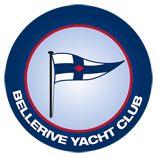Three BYC boats, Tahiti, White Rose (Sandringham YC – affiliated with BYC) and Phase Three, headed for the east coast, bound for Melbourne, in February 2020. Why Melbourne? Several reasons: White Rose wanted to get to its owners’ home marina, Phase Three wanted to go to a show, and Tahiti wanted to go to Docklands, for some unknown reason. Maybe just to catch a tram from the marina.
There were a few conditions set for this cruise: don’t rush; try to get good sailing conditions; sail mostly in daylight; catch some fish. The first few legs went smoothly, with a nice sail to Norfolk Bay and a transit of Denison Canal the next morning. A brisk westerly saw double digit speeds up Marion Bay and through Mercury Passage. However Tahiti experienced an unusual vibration in the drive shaft. We had to slow down, lock the drivetrain, and wish we had a folding propeller. At Orford it was discovered that a large clump of seaweed had fouled the prop and put it out of balance. Problem easily solved. However this was a recurring issue up the coast as the big NE swells generated by the tailend of a tropical cyclone had broken off massive amounts of seaweed that was floating everywhere and impossible to avoid. Swimming under the boat to clear seaweed became a daily activity. Orford was a pleasant stop-over. Phase Three picked up an extra crew. Half the group stretched their legs with a coastal walk through to Spring Beach. The fellows opted for a chin wag on Tahiti, enjoying the sunshine and some elbow bending.
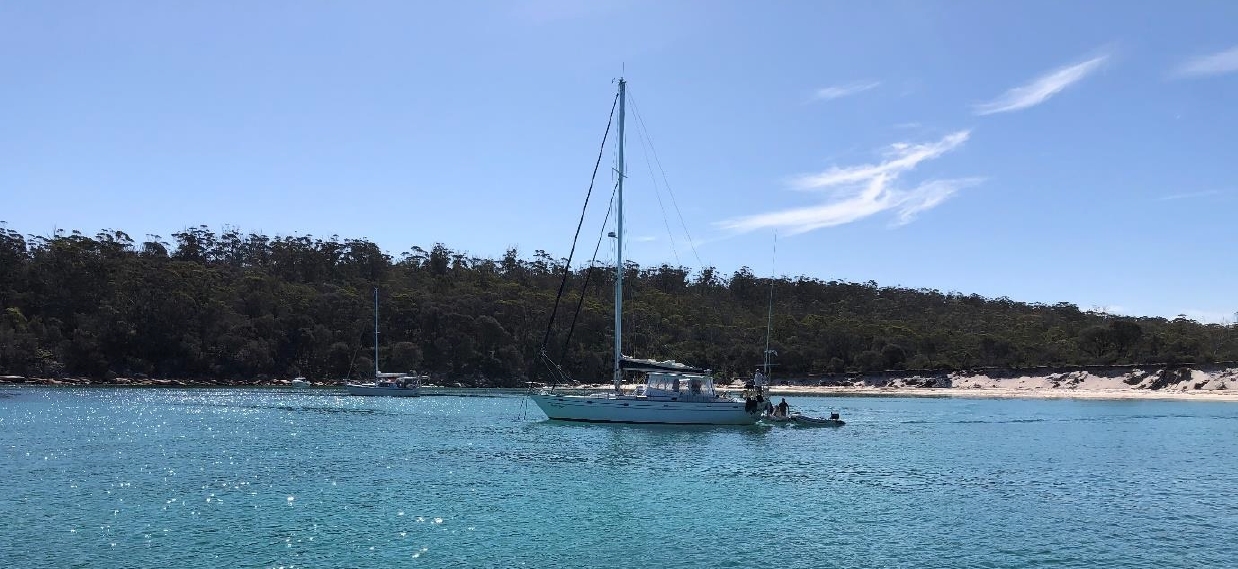
Phase Three and White Rose at Bryans Corner
A lack of wind the next day saw us motoring towards Bryans Corner. White Rose made most of the opportunity to take a close look at Isle de Phoques. Phase Three caught flathead. Tahiti went in for a look at Hen and Chicken and the bottom of Schouten. Strong northerlies gave us a strong incentive not to head north so we spent a few days around the Passage. White Rose circumnavigated Schouten Island. We went into Coles Bay with anchorages at Crockets and Refuge Island/Hazards Beach. The evening at Crockets, sitting under the casuarinas, was one of those idyllic balmy Tasmanian evenings, straight out of a travel brochure, that often presage a coming front. And this proved to be the case, with a stiff SW coming in overnight. Finally, conditions eased and we went in to Wineglass, anchoring on the western end of the bay in anticipation of strong SW and W winds overnight. Not the most comfortable night we have had. The eastern anchorage had nine boats in it and they had a worse night than we did.
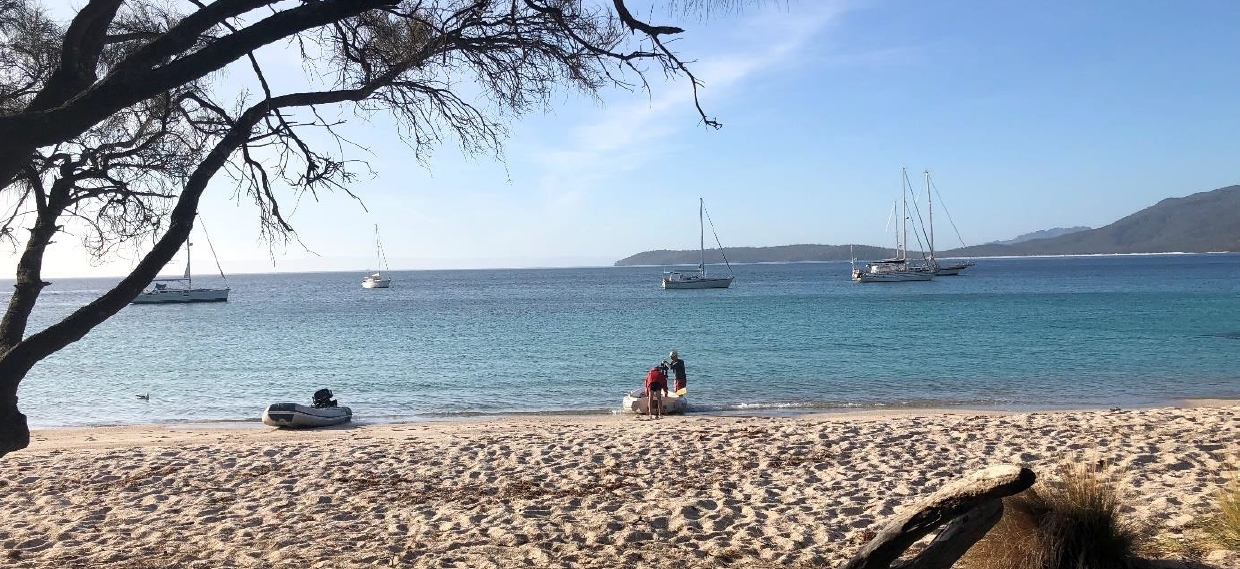
Crockets Beach on Schouten - a beautiful place for sundowners under the casuarinas

Enjoying the perfect conditions at Crockets
We left early the next morning with the promise of a southerly change later in the morning. Gusty NW winds gave way to a blast of 40+ knots as the change came through. We then had lovely sailing conditions with rapid progress until the wind eased off St Helens. Picked up moorings at Binalong Bay. After the S swell eased we moved a little north to Seaton Cove to sit out the massive westerly gales going through Banks Strait and everywhere else in Tasmania. We had the quietest spot in all of Tassie. Highly recommended in a westerly. An early pre-dawn start had us around Eddystone on the low tide and we just kept going to Swan Island. Not a favoured anchorage for many but it served us well. The next day we tackled Banks Strait in a stiff NW that was touching 30 knots. Slow going into steep seas and 2 knots of current. Uncomfortable but kind of necessary if we were to get somewhere for the next forecast blow.
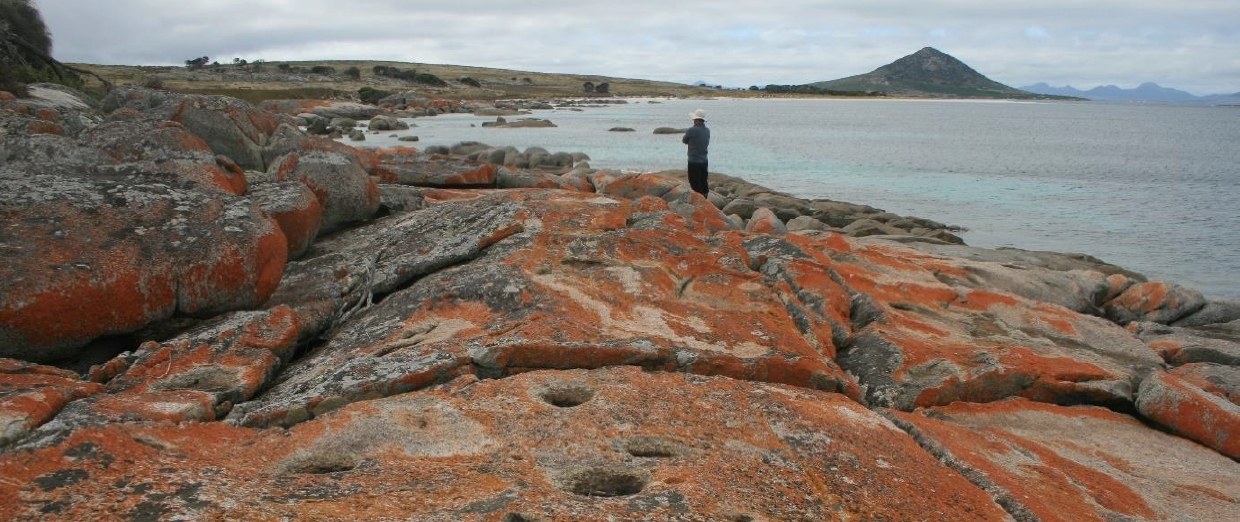
From Badger Island looking across to Mount Chapel Island
A lunch-stop at Badger Island provided welcome respite. This is a beautiful spot with lovely beaches and good holding in weed-free sand. Highly recommended. The grave of Lucy Beedon is on the Island. She is well known as an aboriginal activist and spokesperson for her people. Our anchorage was at Lucy’s Beach just down from Lucy Point. We were anticipating the next move to Deal Island so moved from Badger up to Prime Seal Island. After lunch the breeze had abated to under 20 knots so we had a lovely sail across to Prime Seal.
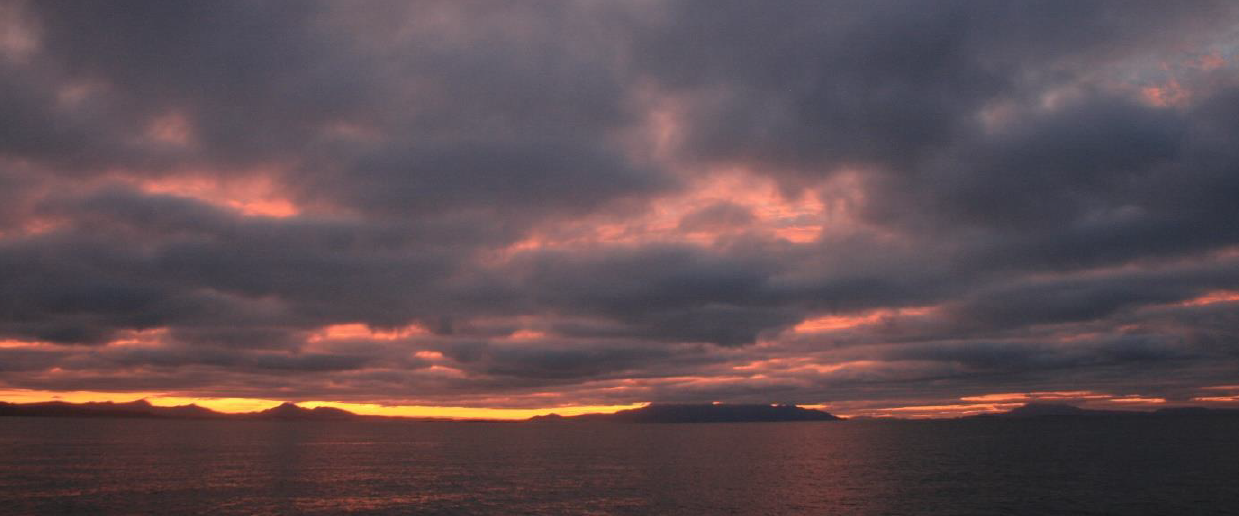
Our first sunrise at Prime Seal – looking across to Flinders Island
We could have moved to Deal Island the next day but it was forecast to get the worst of an approaching change, with up to 50 knots. The forecast was for a SW change followed by a moderating breeze, perfect for getting to the Kent group on the tail of the change. However, the situation changed very quickly, and the forecast SW change intensified to become a regular gale for most of the next day. Our planned move to Royden was revised and we stayed at Prime Seal. Phase Three was on the MAST mooring there, which happens to be the best spot for catching enormous flathead. These were so large that two fish fed 10 people. OK, so we also had calamari, black lip and green lip abalone etc. Prime Seal is worth a visit. Good in a westerly gale only if you are on the mooring, though, as we were to find out the following night/morning.
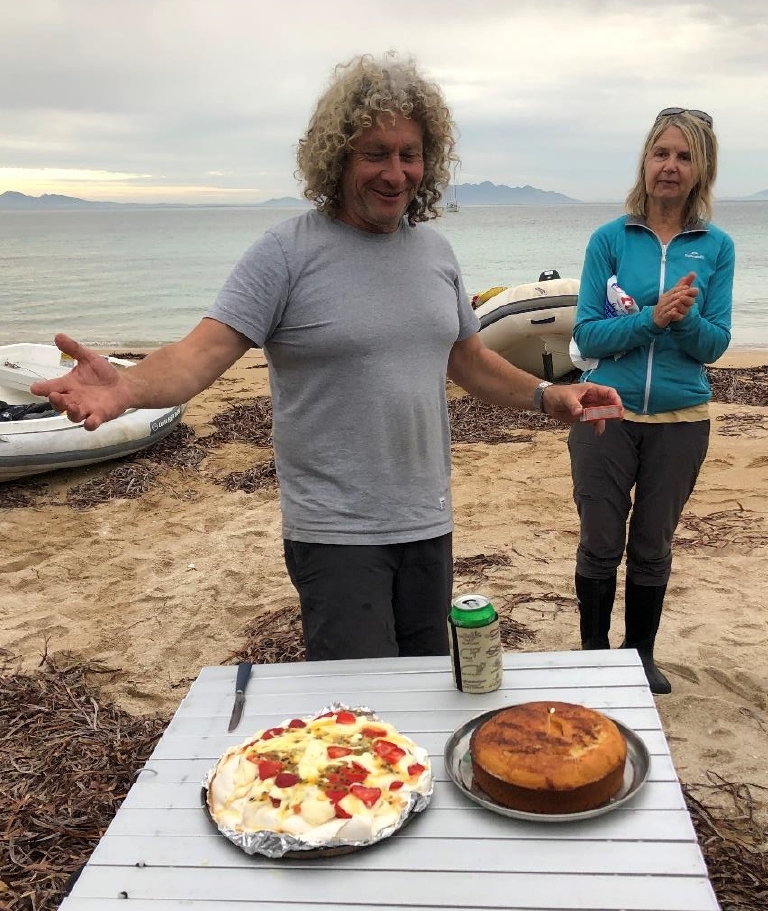
Birthday cake on the beach at Prime Seal
We had a delightful evening on the beach enjoying barbecued seafood in balmy calm conditions. David Webb celebrated another NSY birthday (not sixty yet) and the chef on Tahiti managed to produce a pavlova and a cake to mark the occasion. The wind built through the night and, to cut a long night short, of 5 boats in the bay, 4 dragged repeatedly. Only Phase Three, on the MAST mooring, was secure. The issue was the strap weed that chokes anchors and the poor holding of the sand, if you happen to drop into a sand patch. One boat motored circuits all night while in desperation the other three, including Tahiti and white Rose, anchored close to shore in sand in front of the weed beds. We were able to hold but the outgoing tide left us unable to retrieve our anchors until the next flood. It was a reasonable compromise given the conditions. Our intention is to lobby MAST to drop a couple more moorings there.
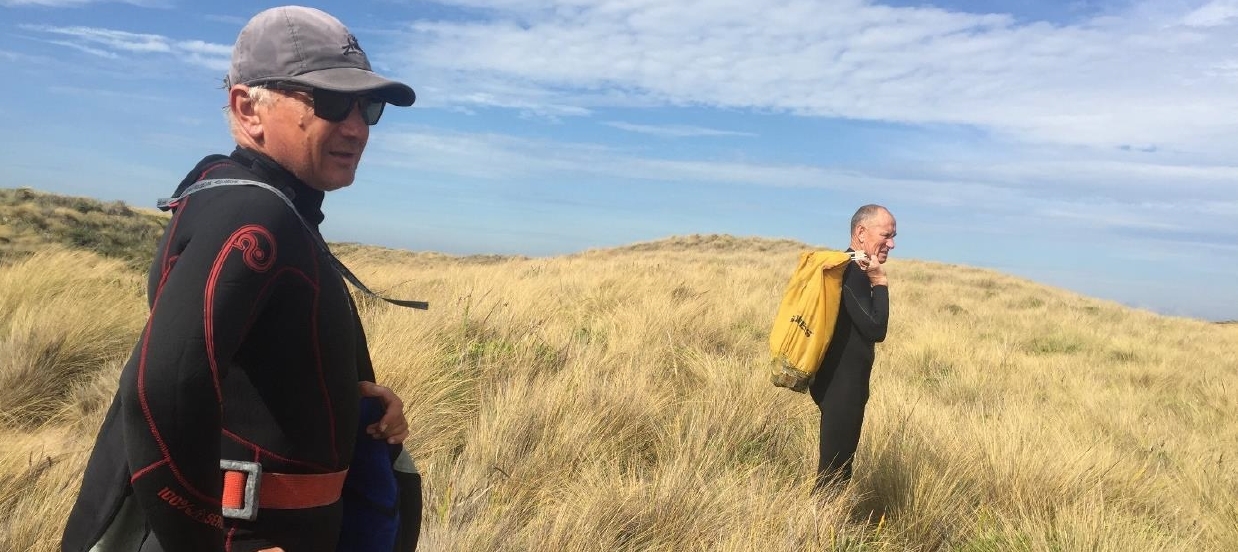
Where are those snakes?
Snorkelling was quite spectacular on Prime Seal. Plenty of colourful fish and big granite boulders. We hiked across to the other side of the island for a snorkel. Plenty of swell and fish to make it interesting. The amount of rubbish washed up on the western side was unbelievable though. This ranged from bottles, rope and timber to old car bumper bars. It obviously just keeps washing in and is never cleaned up. We were a bit cautious about snakes in the tussocks, but Paul only saw a couple of monsters.
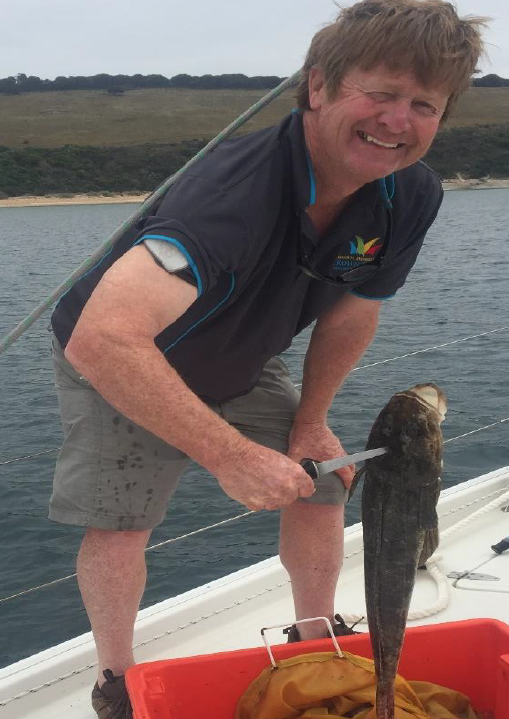
All flathead were keepers- sandies and blue spot
Conditions were better the following night and we were able to catch more enormous flathead. The next leg was to Deal Island. The gale had moderated and we had the best sailing conditions one could wish for in Bass Strait: 15 knots on the beam, full sails, doing 7-8 knots all the way. A bit lumpy but not too much so. On this leg White Rose had issues with their headsail foils coming apart. They took the long way around into East Cove, in the lee of the Island, where they were able to get both headsails furled. Repairs were carried out in East Cove. For all of us this was our first time on Deal Island. A very special place and well worth visiting. We had dolphins in at the beach to swim with, penguins coming in at night, geese waking us in the morning and the tamest wallabies imaginable. There are numerous walks on the island to various bays and hills. We walked to Garden Cove and to the lighthouse. Just beyond the lighthouse is the 1943 crash site of a WWII RAAF aircraft, an Airspeed Oxford. Aeroplane engines are still there but not much else. The impact of the fire on the site is still evident after almost 80 years.
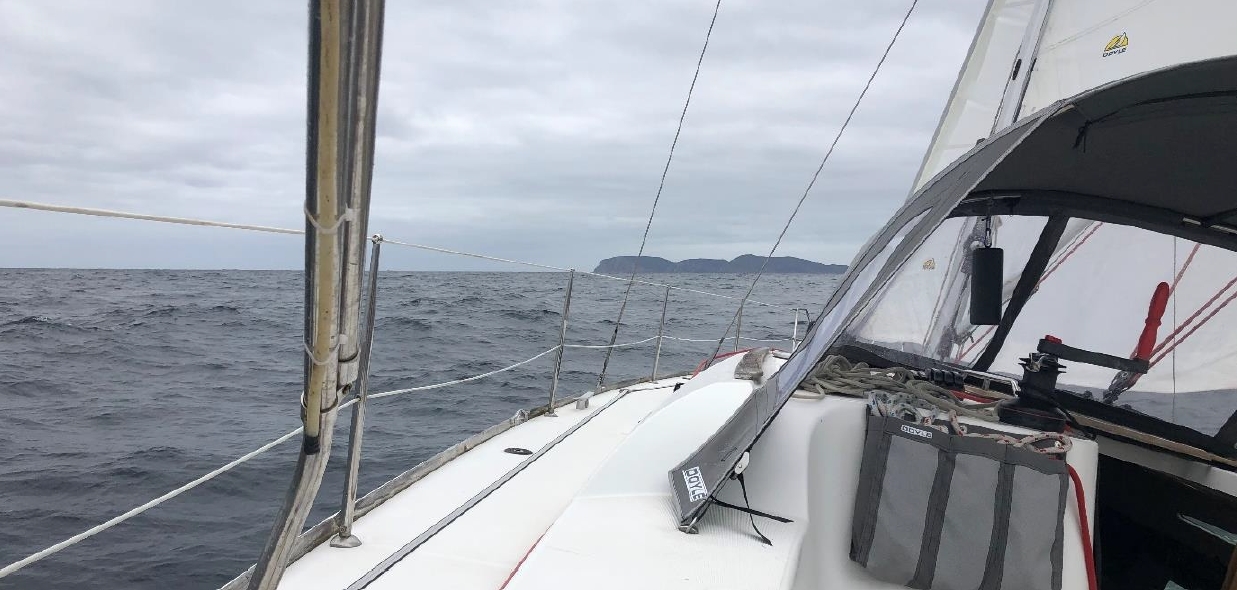
Tahiti heading for Deal Island after the best Bass Strait sail one could hope for, 7-8 knots all the way
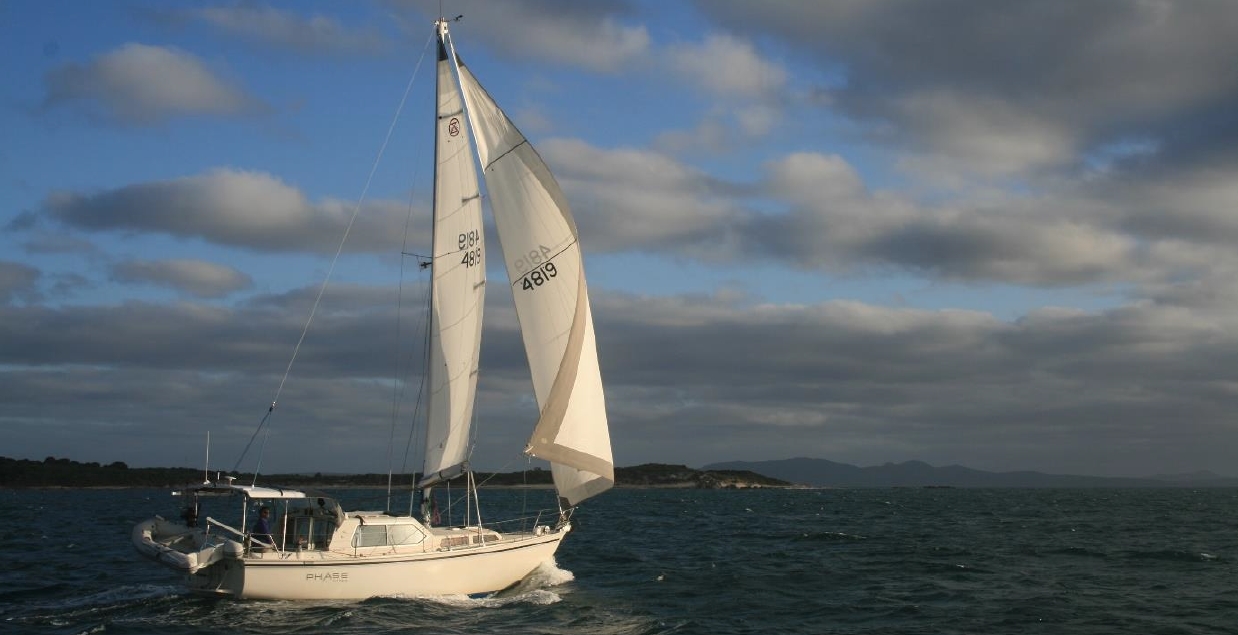
Phase Three heading for Deal Island
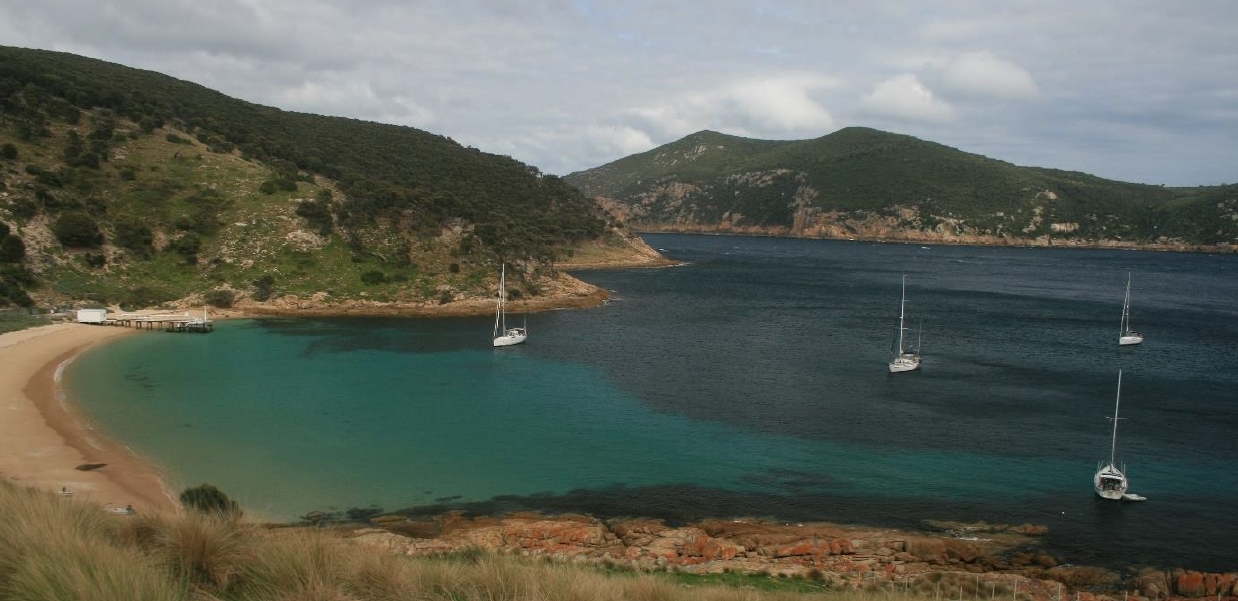
East Cove Deal Island
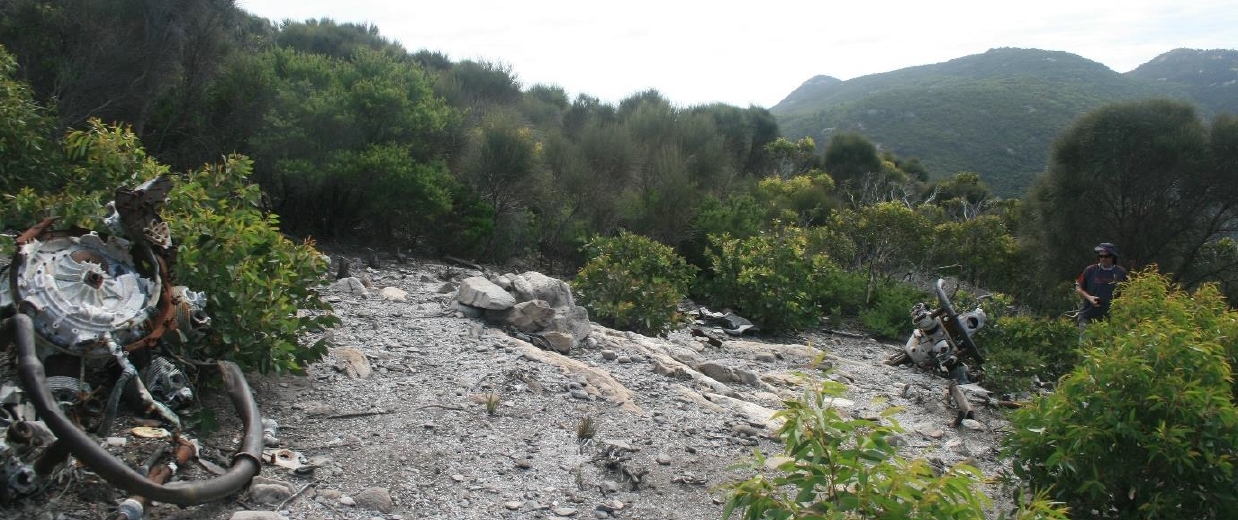
Airspeed Oxford crash site near the lighthouse on Deal Island – all RAAF personnel killed
Two nights on Deal is hardly enough. We would like to get back there. However, our planned two nights turned into three when just before our planned dawn departure a message came from Phase Three saying that they could not sail due to a sick crew member. So began a group effort to deal with the situation. A medevac by chopper was organised and a crew shuffle allowed Phase Three to return to Bellerive. But that is another story!
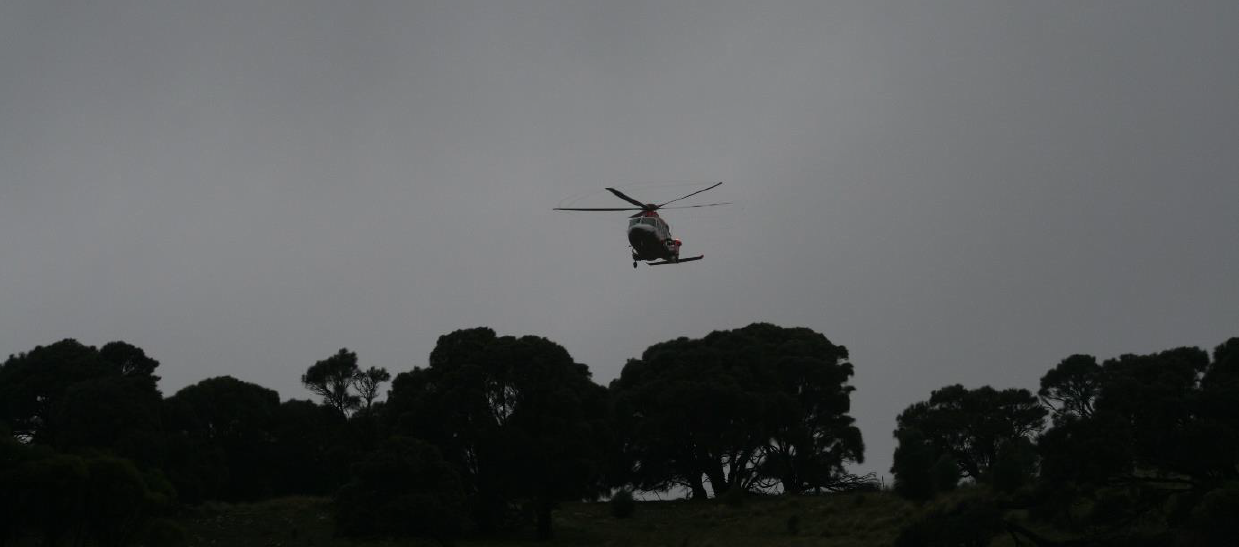
The medevac chopper coming in to land in marginal conditions
The next day Tahiti and White Rose headed out of the northern end of Murray Pass heading for Victoria. The SW change that had come in overnight had built up 3-4 m seas and, due to the current, they were quite steep with a short period. We motor-sailed to make it a bit easier to point to our destination and to give the house batteries some charge. The further we got from the Kent Group the better the conditions became. We by-passed Hogan Island and went straight for Refuge Cove on the eastern side of Wilsons Promontory. The highlight of this leg was the incredible amount of marine life in the specially protected zone. Dozens and dozens of dolphins coming at us, all seeming to leap out of the water simultaneously, mutton birds by the tens of thousands, albatross, gannets, seals etc all in abundance. We arrived at Refuge Cove to find we had it to ourselves.
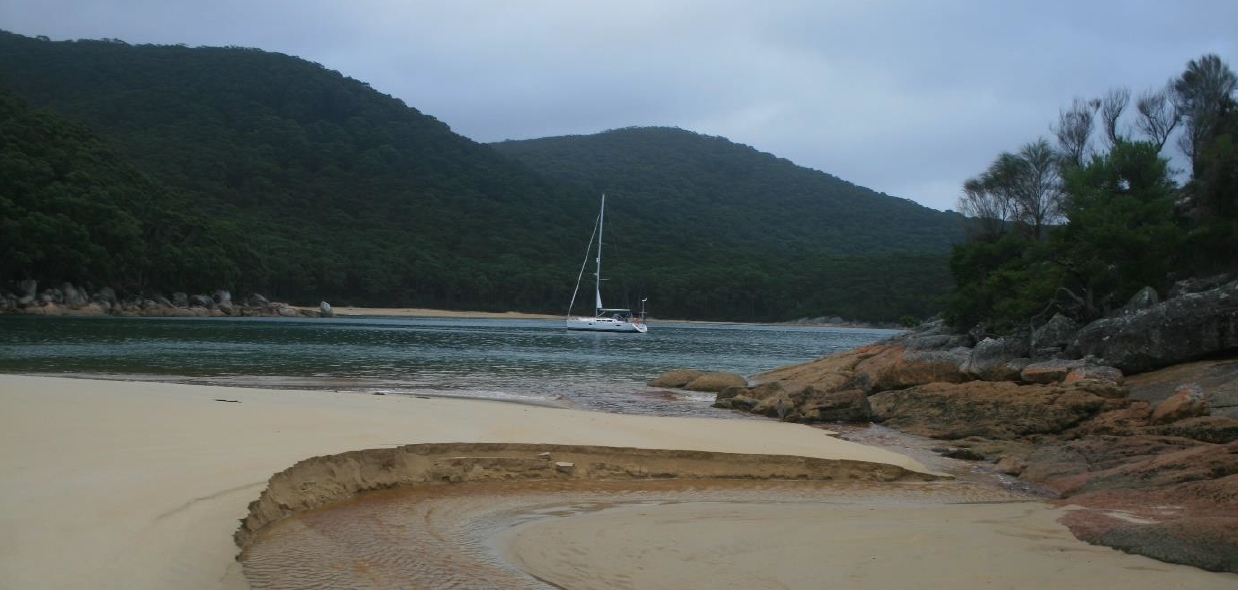
Tahiti safely tucked in at Refuge Cove
What a delightful anchorage – touted as the best and nicest in all of Victoria. I have no argument with that. After a swim it was time for a walk ashore. This area is popular with bushwalkers but there were only a few tents in the campsite. Of more interest to me were the names of the boats up on the wall. Quite a few well-known boats with visits recorded going back to the early 1980s. Tahiti and White Rose have now joined them. White Rose hosted dinner that night. After more than two weeks of cruising they could still manage to serve up some lovely steaks and fresh salad. Very welcome indeed, Susan.
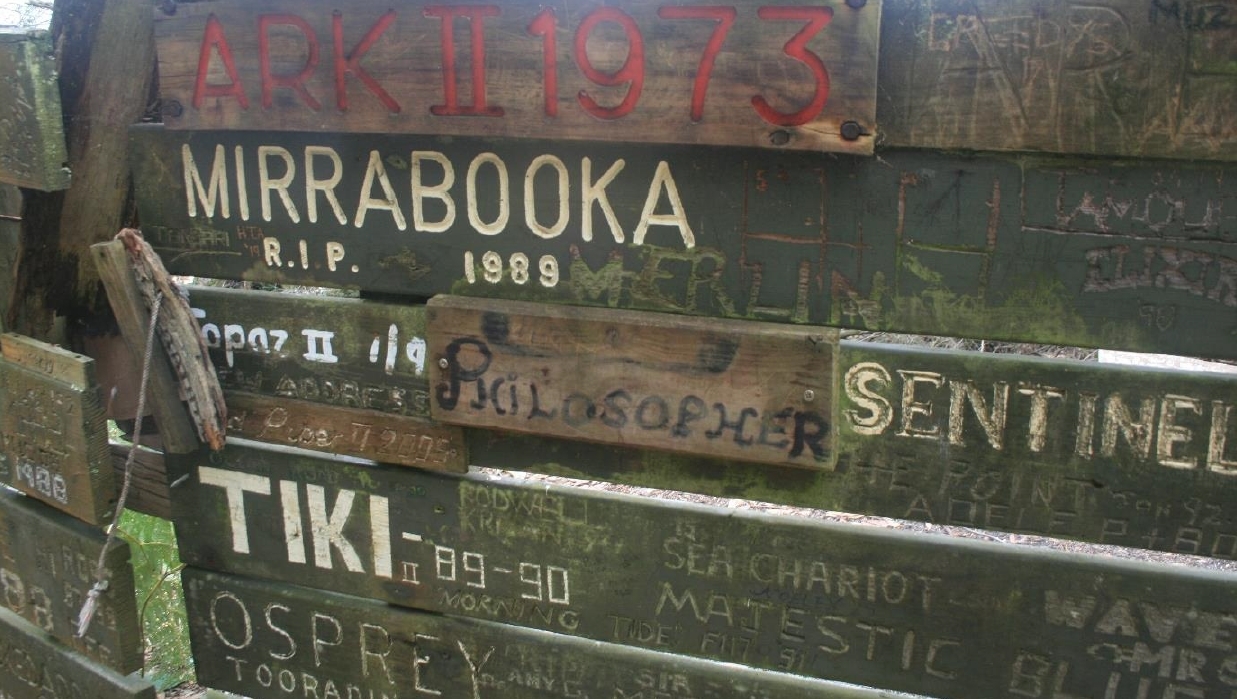
The boat wall at Refuge Cove which now includes Tahiti and White Rose
With an easterly change on the way we moved around to the other side of the Prom, into Oberon Bay. The bottom of the Prom is very scenic with much the same granite aspect as we are familiar with around the outside of Freycinet. A very different proposition from Refuge, Oberon could accommodate the Spanish Armada. It provided Sheenagh with a good opportunity for a long beach walk. This was pretty much a rest day. With an easterly setting in for a few days, there was no need to rush along the coast. The following day, with a tailwind of around 15 kts, we headed westwards towards Phillip Island. We decided on the western side rather than San Remo, and settled on Cat Bay. This is known as a surf beach and is not a recognised anchorage, according to the Victorian Cruising Guide. However, after two days of easterly weather, the prevailing SW swell had been flattened. There are a few reefs around the beach but we found a deepish channel that ran up quite close to the beach. The anchor bounced off rocks for a while before settling in to what turned out to be clay. White Rose found a sand patch. The strong currents and swell must scour the bottom here and move a lot of the sand around.
The last leg saw us through Port Phillip Heads on a flood tide in fairly calm conditions. This is an unusual piece of water with swirling eddies, standing waves and dips and hollows. We were glad to get through it in fairly benign conditions. We took the West Channel and, once through this, we made a bee line for Sandringham. It was quite exciting to be sailing up Port Phillip with the Melbourne skyline in the distance. We were very happy to have achieved our objective.
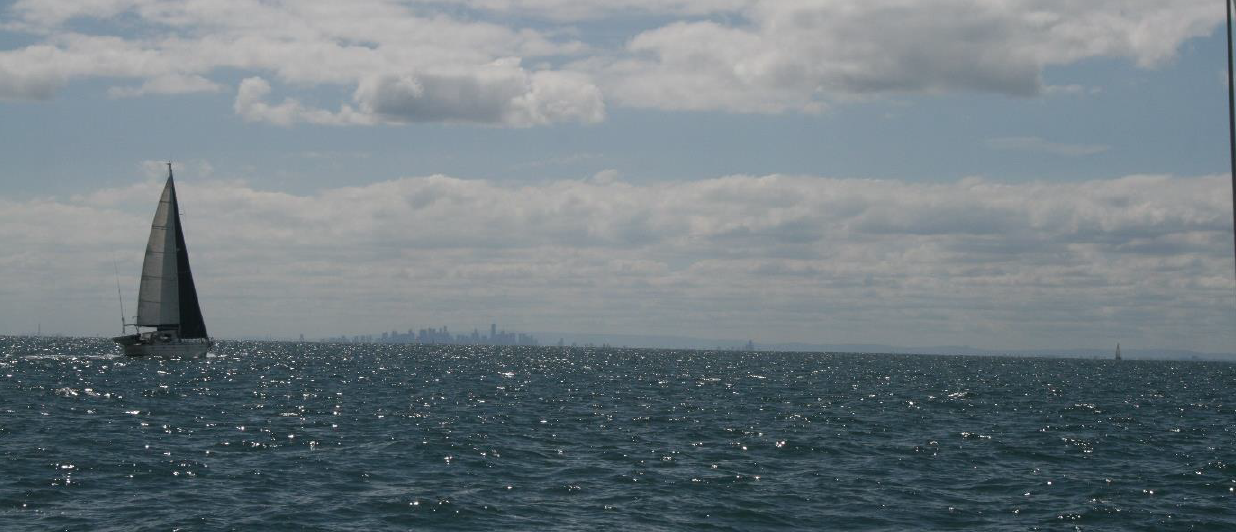
White Rose - almost there
I can’t speak highly enough of Sandringham Yacht Club. The club really looked after us, the facilities are excellent and the members were friendly and easy to get along with. If you sail to Melbourne I can thoroughly recommend Sandringham. The suburb of Hampton is but a short walk away. Hampton has most things that you could want, including a train station for getting into Melbourne, if that is your desire. Hampton does not have late night pubs but Brighton is not too far away in one direction and Sandringham in the other.
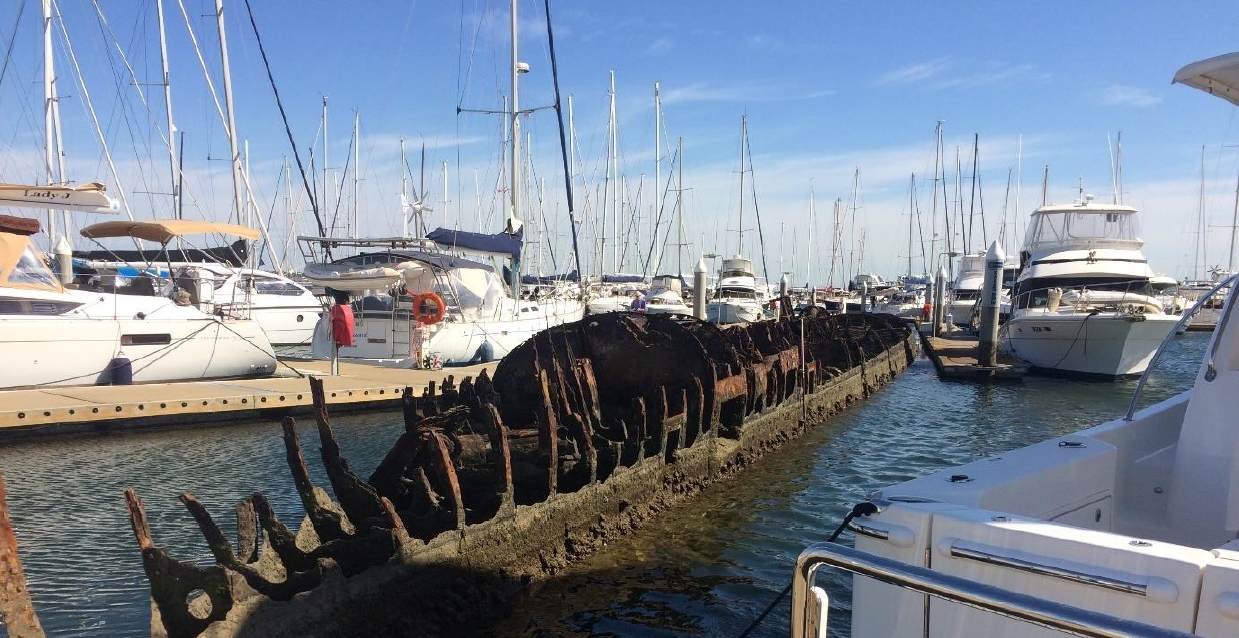
The WWI era submarine that is now a feature of the Sandringham marina
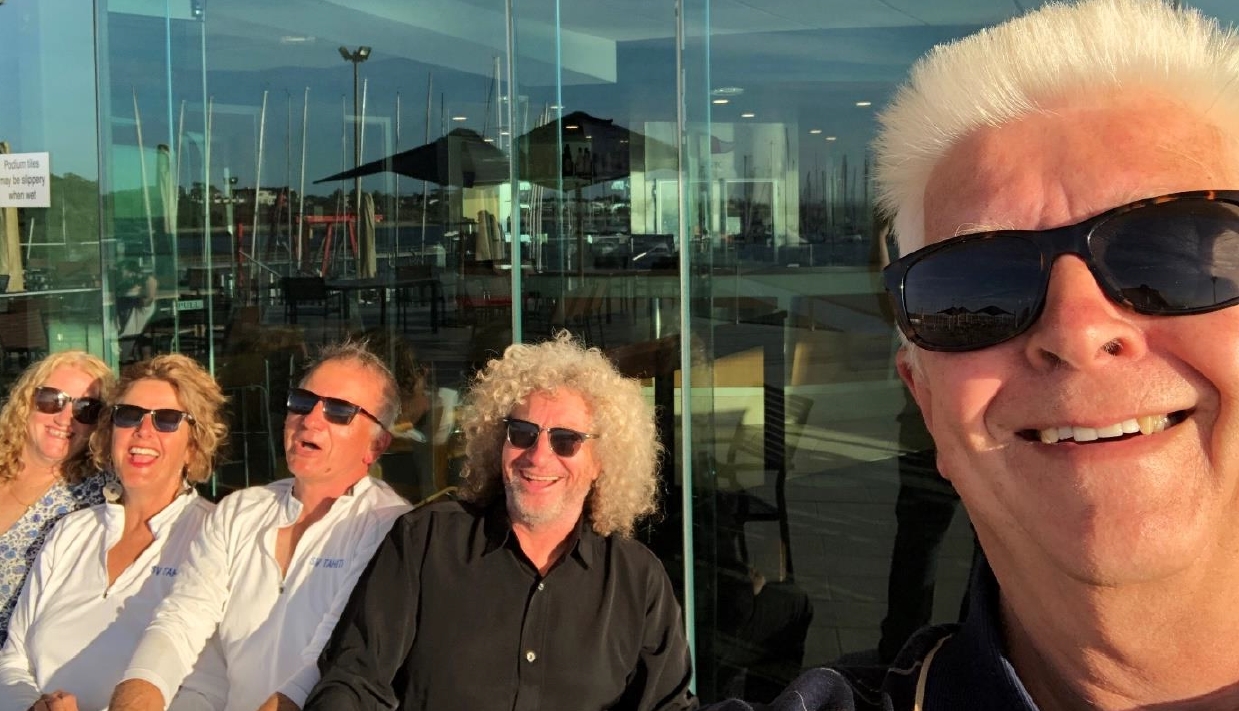
The crew of Tahiti and White Rose kindly photographed by Lex O'Connor the photobomber, at Sandringham Yacht Club
We really enjoyed the hospitality of Sandringham Yacht Club. Sheenagh had a long chat with Lex O’Connor, about weather routing and navigation. Lex is well known for his experience in these areas and also for photobombing. Well done Lex, the photobombing was excellent. Lex agreed with our planned departure date, which pleased Sheenagh. We had a few days to plan our departure. Our foray into Docklands was abandoned as Covid-19 concerns started to take hold. So we enjoyed the local scene, swimming at the excellent beach, catching up with other sailors and resupplying for the return voyage. Most foods were available though some fresh foods were expensive. However, toilet paper was made of unobtainium. Plans to head down the west coast via King Island were abandoned given that we were returning alone, Apollo Bay was silted up and inaccessible, and there were covid-19 restrictions on the horizon. We left Sandringham and motored across a glassy bay to Sorrento where we hung off a mooring while a north easterly built up and gave us the most uncomfortable night of our trip. We exited through the heads with the James Craig and pointed SE till we turned the corner past Swan Island. Keen to get to Binalong for a sleep we cut close to Eddystone and had to spend almost an hour with a good torch playing spot the cray pot. Then it was Bryans Corner, North Bay and Bellerive.
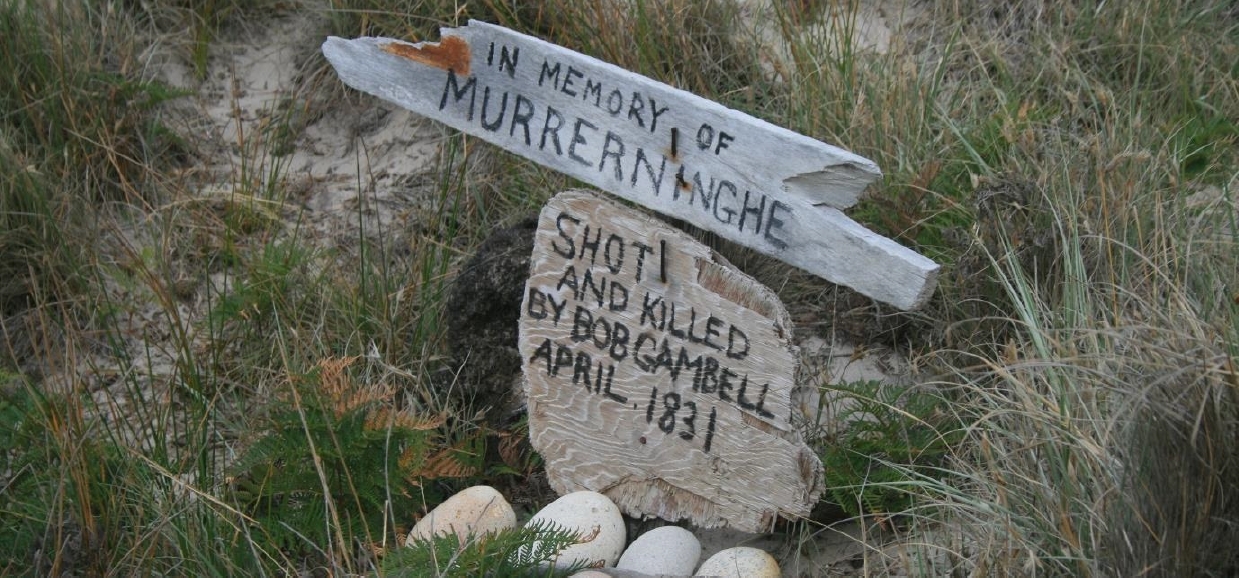
Gravesite (?) memorial at Garden Cove on Deal Island. Murrerninghe was Truganinni’s sister, abducted and taken to work on Kangaroo Island by sealers and shot and killed on Deal Island.
